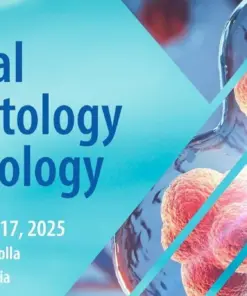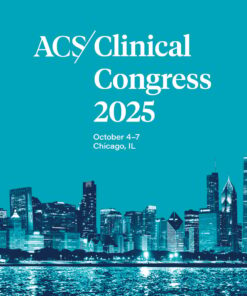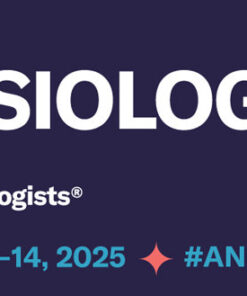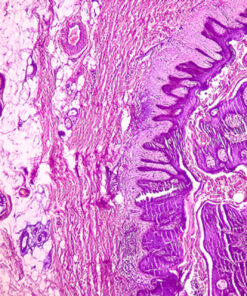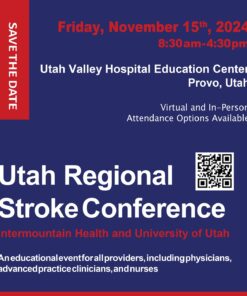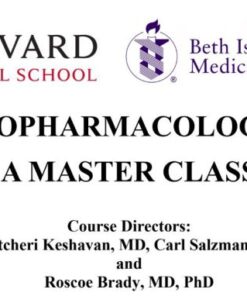University of Miami Neuromyelitis Optica Spectrum Disorder 2023
25 $
Delivery time: Maximum to 1 hours
Format : 7 videos + 7 pdfs
File size: 1.91 GB
Friday, November 10, 2023, 8:00 AM – 4:00 PM, GALLERYone Ft. Lauderdale-A Doubletree Suites by Hilton – Gallery Ballroom, Miami, FL
The overall objective of this course is to bring awareness to a group of recently described inflammatory disorders of the central nervous system distinct from multiple sclerosis that can be identified using specific biomarkers. This distinction is critical not only from a diagnostic standpoint but also from therapy, since treatment of these disorders as multiple sclerosis can do harm and worsen these otherwise distinct entities. The typical clinical presentations that should alert the practitioners of these alternate diagnosis, the specific diagnostic markers, and their distinct treatment options will all be discussed.
This course will focus on an emerging spectrum of antibody-driven CNS autoimmune disorders that attack the brain and spinal cord, Neuromyelitis Optica Spectrum Disorders (NMOSD) and myelin oligodendrocyte glycoprotein antibody disease (MOGAD). As recent emerging disorders, NMOSD and MOGAD are being recognized as distinct from multiple sclerosis (MS) and other demyelinating neurological disorders. The goal of this course is to increase awareness of NMOSD and MOGAD and facilitate early diagnosis and therapy.
Difficult diagnostic and therapeutic problems exemplified by real-life cases will be presented, including an exchange of information between faculty and attendees with case presentations, dedicated discussions, question and answer sessions and panel discussions.
- Develop a clinical plan to identify and diagnose early features suggestive of Neuromyelitis Optica Spectrum Disorders (NMOSD) Based on knowledge of the current diagnostic criteria and how those differ from criteria to diagnose MS or other CNS autoimmune disorders.
- Consider Neuroimmunologic mechanisms of action, the pathogenetic role of compliment, and evidence for efficacy to assess the risk vs benefits of available and pending disease modifying therapy (DMT) for NMOSD.
- Recognize and differentiate between the clinical presentations of optic neuritis that are more likely to involve anti-MOG antibodies compared to other causes, such as neuromyelitis optica spectrum disorder (NMOSD) or multiple sclerosis.
- Distinguish the key clinical features that differentiate NMOSD from MOGAD, with a particular focus on the characteristic manifestations and diagnostic criteria of each disorder.
+ Topics:
Anti-Complement Therapies in NMOSD- E culizumab and Ravalizumab.mp4
Anti-Complement Therapies in NMOSD- E culizumab and Ravalizumab.pdf
Anti-IL6 Therapy- Satralizumab.mp4
Anti-IL6 Therapy- Satralizumab.pdf
Case Presentations and Panel Discussion.mp4
Case Presentations and Panel Discussion.pdf
Inebilizumab and Other Anti-B-Cell Depleting Therapies.mp4
Inebilizumab and Other Anti-B-Cell Depleting Therapies.pdf
KEYNOTE- Pathogenesis and Current Criteria for Diagnosis of Aquaporinopathies and Myelin Oligodendrocyte Glycoprotein Antibody Disease (MOGAD).mp4
KEYNOTE- Pathogenesis and Current Criteria for Diagnosis of Aquaporinopathies and Myelin Oligodendrocyte Glycoprotein Antibody Disease (MOGAD).pdf
Optical Coherence Tomography (OCT) in Neuromyelitis Optica Spectrum Disorder (NMOSD).mp4
Optical Coherence Tomography (OCT) in Neuromyelitis Optica Spectrum Disorder (NMOSD).pdf
Pregnancy in NMOSD.mp4
Pregnancy in NMOSD.pdf













